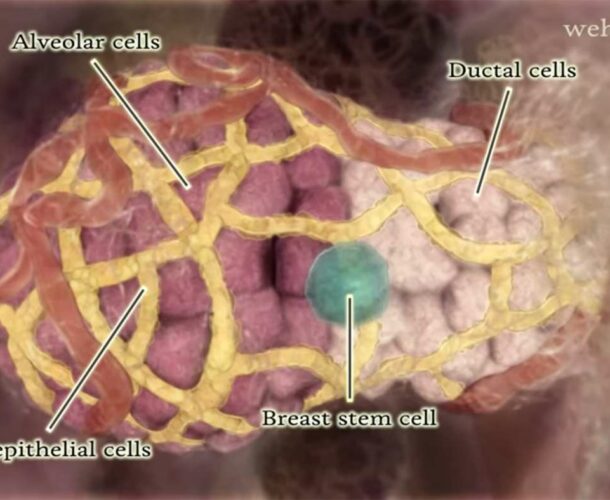Institute scientists find that stem cell ‘daughters’, called luminal progenitor cells, are the likely origin of breast cancer in women with familial breast cancers caused by BRCA1 mutations.
BRCA1 gene mutations are found in 10-20 per cent of women with hereditary breast cancer. Women with BRCA1 mutations often develop ‘basal-like’ breast cancer, which is a particularly aggressive form of the disease.
Cancer origins
A team led by Professor Jane Visvader and Professor Geoff Lindeman, with bioinformatics researcher Professor Gordon Smyth and colleagues, discover that luminal progenitor cells are the likely source of basal-like breast tumours.
The discovery, published in Nature Medicine, represents a major shift in the way scientists think breast cancer develops.
“Research from our colleagues Dr Elgene Lim and Dr François Vaillant has shown that breast tissue from women with BRCA1 mutations has unexpectedly high numbers of luminal progenitor cells,” Visvader says.
“Our studies reveal that BRCA1 breast tissue and basal breast tumors are more similar to normal luminal progenitor cells than any other cell type in the breast. This places the spotlight on errant luminal progenitors, rather than breast stem cells.”
Hereditary breast cancers
Lindeman, who also heads the Familial Cancer Centre at The Royal Melbourne Hospital, said the discovery could lead to new drugs or therapies to treat or prevent breast cancer, one of the biggest causes of premature death in women.
“BRCA1 women have a 65 per cent lifetime chance of developing breast cancer,” Lindeman says, “so identifying new treatment and prevention strategies is a priority for us.”
Luminal progenitor cells in women with BRCA1 mutations have ‘forgotten’ how to behave, Lindeman says.
“Usually, luminal progenitor cells multiply rapidly in the presence of certain growth factors. In BRCA1 women these cells don’t even require growth factors to proliferate – they misbehave from the outset. In the long-term, breast biopsies might be able to reveal misbehaving luminal progenitor cells.”
Repairing DNA
“We also know that the BRCA1 gene is required for normal DNA repair. There may therefore be a triple whammy effect – faulty growth control, faulty DNA repair and expanded luminal progenitor cell numbers –ultimately resulting in breast cancer in some BRCA1 mutation carriers.”
Visvader says identifying stem cells, luminal progenitor cells and other cell types in the breast is highlighting cancer-prone cell types and key genetic pathways.
“This research is only possible through the generous donation of breast tissue by women undergoing breast surgery, facilitated by the Kathleen Cuningham Foundation Consortium for Research into Familial Breast Cancer and by the Victorian Cancer Biobank,” she says.
“Hopefully this will lead to new, tailored therapies for the next generation of women.”




